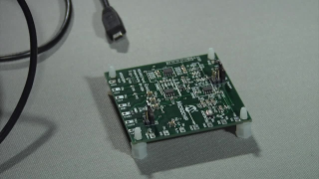Electronica Azi & Microchip SAM C21 Xplained Pro Evaluation Kit
Win a Microchip SAM C21 Xplained Pro Evaluation Kit (ATSAMC21-XPRO) from Electroncia Azi and if you don’t win, receive 15% off your next purchase plus free shipping.
The SAM C21 Xplained Pro evaluation kit is a hardware platform for evaluating the ATSAMC21J18A microcontroller (MCU). Supported by the Studio integrated development platform, the kit provides easy access to the features of the ATSAMC21J18A and explains how to integrate the device into a custom design.
Including an on-board Embedded Debugger, the Xplained Pro MCU series evaluation eliminates the need for external tools to program or debug the ATSAMC21J18A. The kits offer additional peripherals to extend the features of the board and ease the development of custom designs.
The Microchip SAM C series of 5V Cortex M0+ devices is designed for industrial and commercial applications in noisy environments. These products feature robust communications peripherals including the SERCOM module and CAN FD, along with advanced motor control peripherals, and the Peripheral Touch Control (PTC) for developing robust user interfaces.











